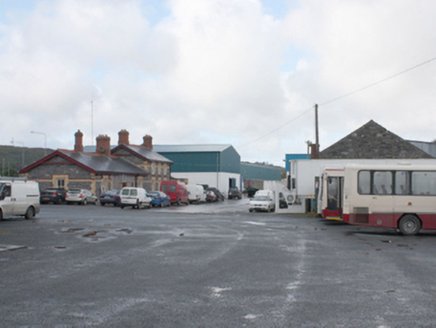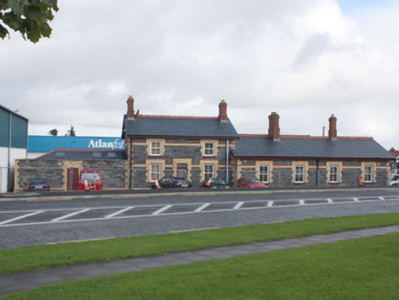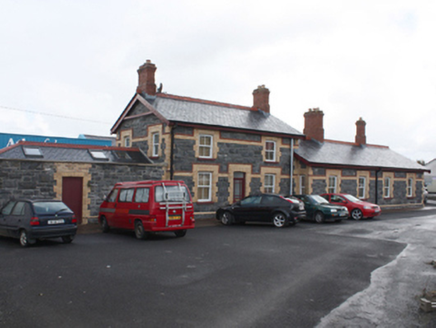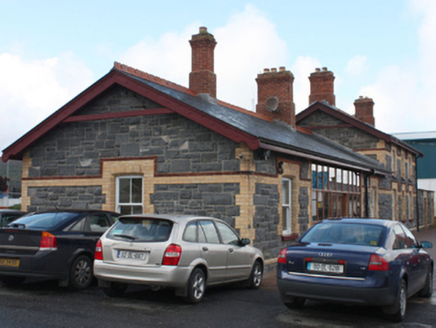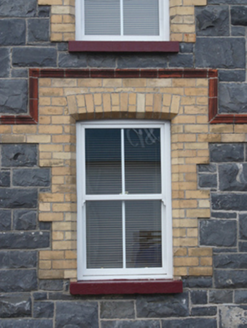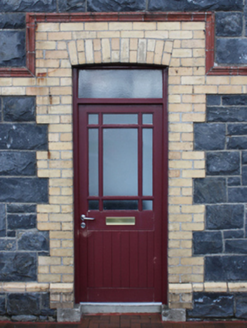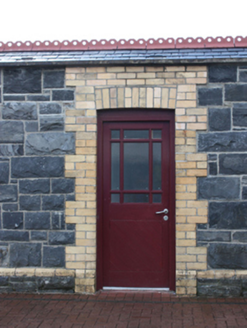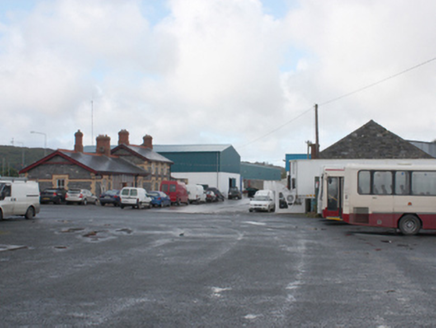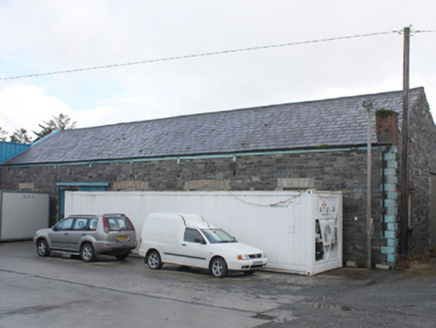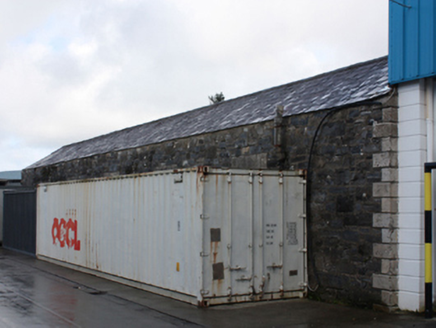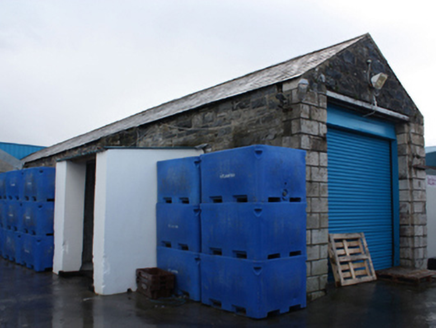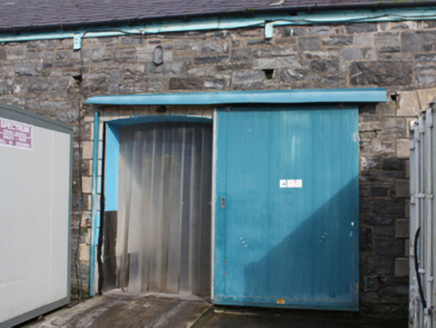Survey Data
Reg No
40805009
Rating
Regional
Categories of Special Interest
Architectural, Social
Previous Name
Carndonagh Railway Station
Original Use
Railway station
In Use As
Office
Date
1895 - 1905
Coordinates
247008, 445395
Date Recorded
08/10/2008
Date Updated
--/--/--
Description
Detached multiple-bay former railway station and station master’s house, built c. 1900-1, comprising central three-bay two-storey block with attached four-bay single-storey block to east and single-bay single-storey block to west. Originally the terminus of the former Buncrana to Carndonagh section of the Londonderry & Lough Swilly Railway line. Line closed in 1935 and later in use as a house, building now in use as commercial offices. Pitched slate roofs with pierced terracotta ridge cresting, and red brick chimneystacks having stepped coping over. Overhanging eaves with timber bargeboards to gables. Replacement and surviving sections of cast-iron rainwater goods. Snecked squared rock-faced stone walls (basalt?) with yellow brick block-and-start quoins to corners, flush yellow brick bands surmounted by moulded brick stringcourse, projecting snecked rock-faced stone plinth with chamfered yellow brick coping over. Segmental-headed window openings having chamfered yellow brick reveals with chamfer-stop, yellow brick block-and-start surrounds, moulded painted brick hoodmouldings over continued as stringcourses, painted stone sills and replacement sash window fittings. Central segmental-headed door opening to the south elevation of the central two-storey block having chamfered yellow brick reveals with chamfer-stop, yellow brick block-and-start surrounds, moulded brick hoodmoulding continued by stringcourse, and with glazed timber door with margin glazing bars to upper section, and with overlight. Set within own grounds north of Carndonagh town centre. Pair of formerly detached five-bay single-storey railway goods shed (north-east) and goods shed\or railway engine house (north-west) to the north of site, now with modern linking fish processing plant building between, having pitched natural slate roofs, squared and snecked rubble stone walls with chamfered block-and-start quoins to the corners, square-headed window openings with chamfered stone or render surrounds, and with segmental-headed carriage-arch opening (to east building) having battened timber sliding door and chamfered stone or render surrounds.
Appraisal
This well-detailed former railway station, built in the characteristic style of the Londonderry and Lough Swilly Railway Company, retains its original character and form despite some recent alterations to accommodate new uses. It has been sensitively restored in recent years, and modern replacements are in keeping with the original structure, and fail to detract from its appeal. The main elevations of this attractive building are enhanced by the contrast between the dark grey rock-faced stone walls and the yellow brick detailing and rendered detailing, which creates interesting textural and tonal variation. The rock-faced masonry used in its construction is a feature of Victorian and Edwardian railway architecture in Ireland. This is a feature of many of the railway stations on Inishowen. This railway station was built as the terminus of the Tooban Junction & Carndonagh section of the Londonderry to Lough Swilly Railway line, which opened on the 1st of July 1901 and closed in December 1935. It was originally built by the Londonderry & Lough Swilly Railway Company who had built the earlier section of the line between Derry and Buncrana in 1864. This line was originally a standard 5ft 3-inch gauge but was regauged to the 3ft narrow gauge in March 1885; the later line was also of this narrow gauge. This former railway station now acts as an interesting historical reminder of the formerly extensive railway network in County Donegal, and is an integral element of the built heritage of the local area and of the wider transport heritage of the county. The simple but well-built rubble stone former railway goods sheds and\or former engine house to the north of site survive in relatively good condition, despite some alterations and modern additions, and add significantly to the historic context and setting of the site.
